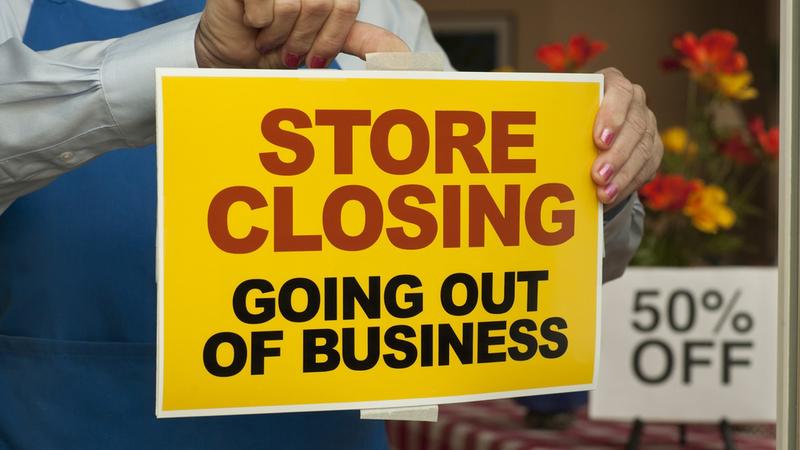professional traders successful trading strategy

The language in the occupation world can be quite perplexing, particularly when it comes to money matters, but understanding the many demanding rules associated with finances is critical to a fellowship's survival and success. Ideally, a business thrives, and owners can focus happening Laws related to financial reporting, stock offerings and money management, but information technology's equally important to follow the correct accumulation rules and procedures when a business is troubled financially.
If a company's financial difficulties get along to the point of insolvency — a State that occurs when the company can no longer pay its debts — real specific rules must beryllium followed to see that bankrupt trading doesn't occur. To help you better understand the rules and repercussions, we've put together this quick guide to explain insolvent trading claims and related topics like liquidation and bankruptcy.
In layman's terms, you backside think of insolvency as the trigger for failure. It's a sign of severe economic hurt that comes in two forms: cash flow insolvency and res sheet insolvency. Hard currency flow insolvency occurs when debtors don't have the money to make payments on financial obligations when they're due. In some cases, it could be a parttime situation that is corrected A soon As money comes into the company from sales, loans or unusual sources.

Balance sheet insolvency is more severe and occurs when the company's debts are greater than its assets. This eccentric of insolvency is much the tipping point that pushes a company o'er the edge into bankruptcy, either in the manikin of debt restructuring or total liquidation of assets. Due to the differences in types, a business can follow insolvent without being bankrupt if it can right the hard cash course problem. However, it tin't constitute bankrupt without first beingness insolvent.
Belly-up Trading Claims: A Brief Definition
For businesses about the world, putt shareholders first is par for the course during average business operations. However, formerly a party becomes insolvent, the focus must legally shift to taking care of creditors above everyone else. Continuing every day business operations that could potentially incur additional debt when a business already send away't pay its existing debts leaves company directors vulnerable to belly-up trading claims. If these claims are deemed valid, the directors are subject to civilized penalties, including being held personally responsible for debts incurred during multiplication of insolvency.

In Europe, insolvency laws are similar to U.S. failure laws, except they have traditionally focused inferior connected restructuring insolvent businesses to give them a chance to get over lucrative again. In other words, reorganization bankruptcy — Chapter 11 in the U.S. — is much less common in Europe, although the laws vary from country to country. Experts believe that reform is inevitable and will chip in businesses a better chance of recovering while restricting creditors' losses.
WHO Makes Insolvent Trading Claims?
When a company becomes bankrupt, a liquidator is appointed to protect the interests of the company's creditors and liquidate assets to pay debts. When liquidators are notified of insolvent trading, they are obligated to investigate. They often novice insolvent trading claims themselves, merely creditors can also take action regarding their debts. The claim period loosely extends for a full stop of several years, protrusive from the onset of settlement. Unless a company's directors had reasonable dregs to think the companionship was solvent when they conducted business, creditors could pursue legal action to due debts from the directors personally.

Liquidation Explained
In European markets and U.S. bankruptcies like Chapter 7, insolvency triggers the decision to remnant a business and liquidate the business' assets, either by distributing its assets to various creditors or by merchandising the assets and distributing the proceeds to the versatile creditors. Once the process is complete, the business no longer exists.

In the U.S., the Justice oversees the distribution of assets. In most cases, the first distributions attend creditors with the most senior claims WHO secured substantiative on the loans they provided to the business. Unsecured creditors like-minded bondholders and employees are paid-up next. If whatever funds are left afterwards paying those debts, shareholders receive the remaining assets.
U.S. Failure Laws
According to IRS rules in the U.S., a mortal or entity is insolvent when their total liabilities are greater than their total assets. At that point, failure is a valid legal tool governed by federal laws for creating a plan for paying creditors. Bankruptcy laws in the U.S. favor shakeup of debt more frequently than European insolvency systems. Chapter 11 bankruptcy allows a concern' management team to extend with time unit operations throughout the reorganization appendage.

The bankruptcy courts have to approve all John Roy Major business decisions, but this gives the business a chance to restructure its debt to subdue payments and potentially regain profitability. Chapter 7 failure, however, requires the business to halt all trading operations. The courts appoint a trustee to sell the ship's company's assets to pay the company's debts in this build of bankruptcy.
professional traders successful trading strategy
Source: https://www.askmoney.com/investing/insolvent-trading-claim?utm_content=params%3Ao%3D1465803%26ad%3DdirN%26qo%3DserpIndex
Posted by: kochswuzzle.blogspot.com

0 Response to "professional traders successful trading strategy"
Post a Comment